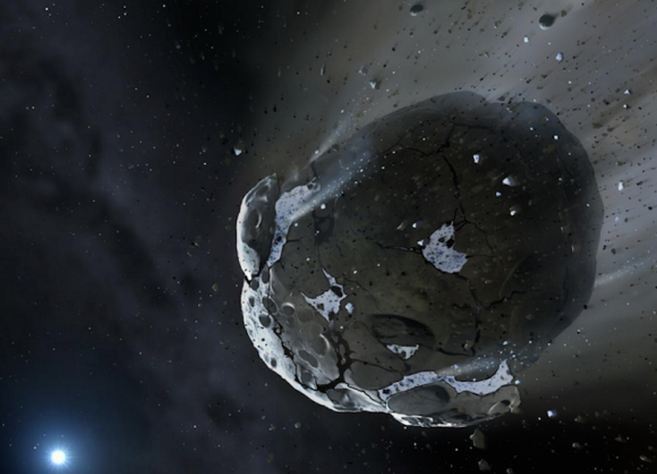Far from being feared objects portending death and destruction, asteroids are now being heralded as the singular source of water that triggers the existence of life on exoplanets in the Universe.
New evidence reinforces the pivotal role played by these water-rich chunks of rock in seeding life elsewhere. These new findings have led scientists in a new study to believe this event probably occurs in countless other distant planetary systems.
Using the William Herschel Telescope in the Canary Islands, astronomers at the University of Warwick in England detected huge amounts of oxygen and hydrogen in the atmosphere of a distant white dwarf star, which is the remnant of a low-mass star like our Sun.
This large volume of these two gases suggests a water-carrying asteroid was disrupted by the star's gravitational attraction and delivered its water into the star's atmosphere, where it was separated into hydrogen and oxygen.
"The amount of water found ... is equivalent to 30 to 35 percent of the oceans on Earth," said Roberto Raddi of Warwick's Astronomy and Astrophysics Group.
This finding suggests an asteroid similar in size to the dwarf planet Ceres, the largest asteroid in our solar system, had impacted the star.
Water striking this white dwarf (identified as SDSS J1242+5226) split into its oxygen and hydrogen components. Oxygen (a relatively heavy element) sinks deep into the star over time while the lighter hydrogen continues to float near the surface.
Astronomers once thought white dwarfs were pristine. But when the team observed the white dwarf in question, they saw it was smothered in oxygen, magnesium, silicon, iron and other heavy elements.
Hydrogen was also far more abundant than expected. These elements match what astronomers expect to see in a water-rich asteroid.
"There are many white dwarfs that hold large amounts of hydrogen in their atmospheres, and this new study suggests that this is evidence that water-rich asteroids or comets are common around other stars than the sun", said study co-author Boris Gänsicke.
Raddi noted that if these stars have planets, they also could receive water from these asteroids and comets.
He said the Warwick study "confirms that asteroids can deliver their constituents (rocks and ice) onto the surface of planets in the inner parts of the planetary systems orbiting other stars, likely within what is known as the habitable zone".
This new evidence suggests countless cosmic bodies such as asteroids and comets contain significant quantities of water. It supports the theory these rocks can deliver water to Earth-like planets and create environments where life can thrive.
Water-rich asteroids are common in the galaxy, researchers said.
"Our research has found that, rather than being unique, water-rich asteroids similar to those found in our solar system appear to be frequent," said Raddi, according to Tech Times.
"Accordingly, many planets may have contained a volume of water comparable to that contained in the Earth".
He said many scientists believe the Earth started out dry. The oceans on the Earth today are the result of impacts of water-rich asteroids or comets.
The study was published May 7 in the journal, Monthly Notices of the Royal Astronomical Society.






















